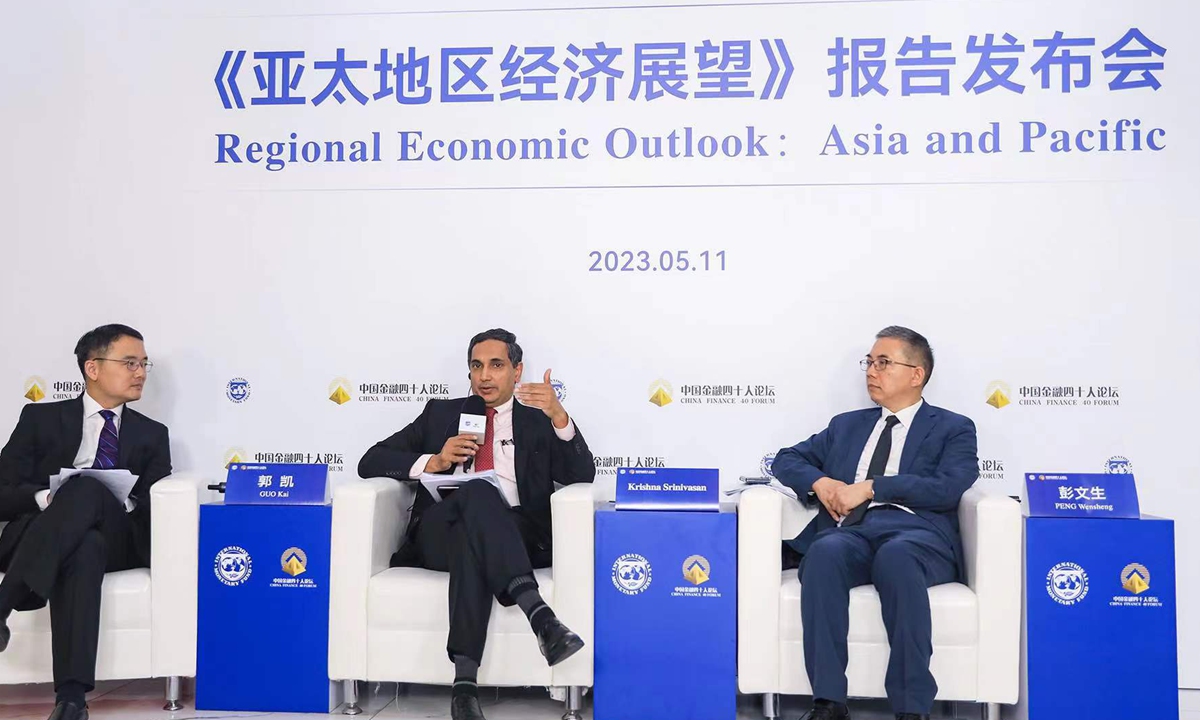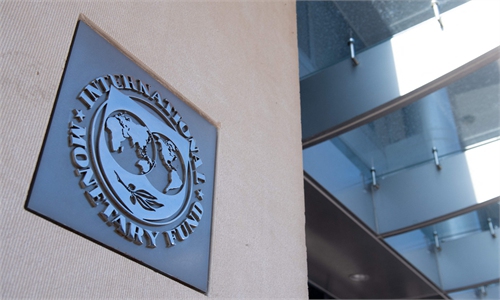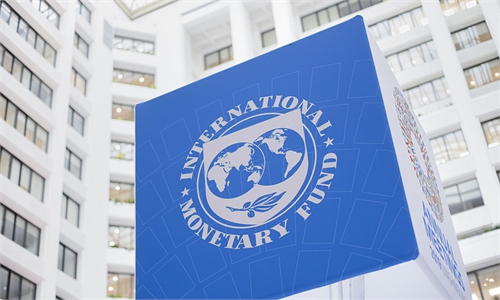
Photo: Courtesy of China Finance 40 Forum
Asia-Pacific will remain a dynamic region in 2023 despite global banks' monetary tightening and lackluster market demand, and the region's dynamism is driven primarily by China's recovery, Krishna Srinivasan, director of the IMF's Asia and Pacific Department, said on Thursday during a media briefing event held by the IMF and China Finance 40 Forum.
According to the Regional Economic Outlook for Asia and the Pacific, growth rate in the region is projected to accelerate this year to 4.6 percent from 3.8 percent in 2022. This means the region would contribute around 70 percent of global growth.
And, China will contribute 34.9 percent of global economic growth. China and India, the two largest emerging market economies, are expected to contribute around half of global growth this year, Srinivasan noted.
In the first quarter, China's GDP expanded 4.5 percent year-on-year to 28.5 trillion yuan ($4.17 trillion), signaling a good start to achieving a strong full-year recovery.
"GDP growth for China in the first quarter was in line with our expectations, and the nature of the recovery is expected to be led by services, which is different from the previous investment-led recovery," Sonali Jain-Chandra, China mission chief of the IMF's Asia and Pacific Department, said during a roundtable on the economic outlook for the Asia-Pacific.
"Our analysis showed that a 1 percentage point increase in GDP growth in China leads to a 0.3 percentage point increase in growth in other Asian economies. The near-term impact of China's recovery will likely vary across countries, with those more heavily reliant on tourism likely reaping the most benefit," Srinivasan said.
China's consumer price index edged up 0.1 percent in April, the National Bureau of Statistics said on Thursday. "China just opened up (from pandemic) in December 2022… Going forward, we see a rebound in activities, and that will lead to an inflation rate of 2 percent at the end of the year… So I don't see deflation risks," Srinivasan said.
Regarding China's trade in April, some foreign media outlets said that the imports fell sharply, while export growth slowed, further signs of weakening domestic demand.
Jain-Chandra said that the weakening in exports was relative to the strong performance of exports in the previous month, and this was very much in line with expectations, as supply chains had not yet normalized last month.
"China's trade data is consistent with our projections, which means that exports are declining… But it is not consistent with a conclusion that domestic demand is weakening… which is more a reflection of external demand weakening, including commodities.
"Commodity prices are also weighing on China's imports. In terms of the rest of this year, we expect a strong recovery in China with yearly GDP growth of 5.2 percent, and this recovery will be led by consumption," Jain-Chandra told the Global Times during the roundtable.
"Going forward, we suggest that fiscal policy should head toward supporting households and consumption, to reduce what we see as excessively high household savings," Thomas Helbling, deputy director of IMF's Asia and the Pacific Department, said.



